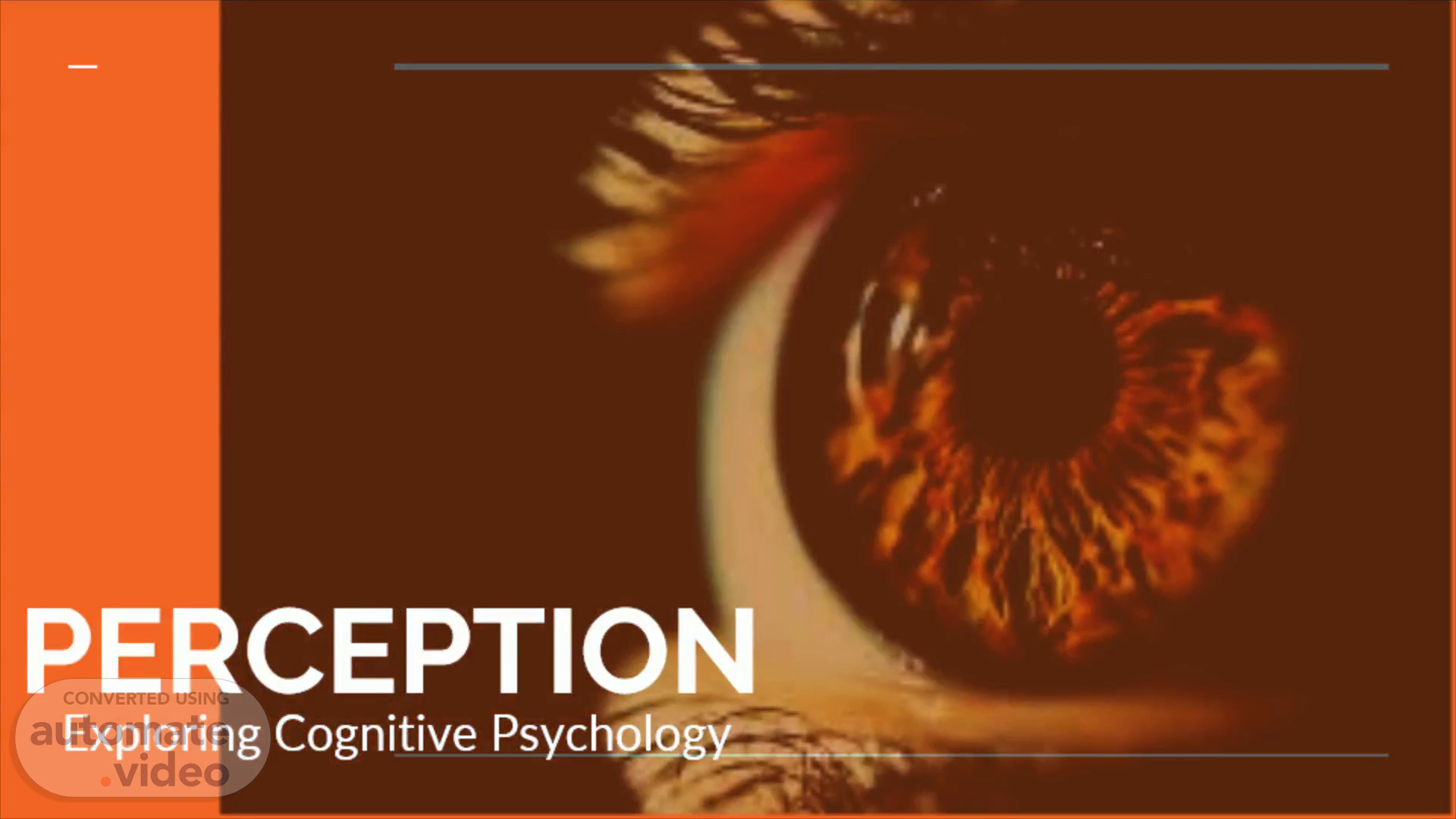Scene 1 (0s)
Exploring Cognitive Psychology. PERCEPTION.
Scene 2 (6s)
Have you ever wonder?. 1. How do we perceive stable objects in the environment given variable stimulation? 2. What are two fundamental approaches to explaining perception? 3. What happens when people with normal visual sensations cannot perceive visual stimuli?.
Scene 3 (20s)
Objectives In this Lesson you will be able to learn about:.
Scene 4 (36s)
Have you ever been told that you “can’t see something that's right under your nose?”.
Scene 5 (49s)
Are you having trouble reaching the top?. Tip: This illusion is called a "perpetual staircase." It seems always to go up, although this feat is impossible..
Scene 6 (1m 1s)
Perception is the set of processes by which we recognize, organize, and make sense of the sensations we receive from environmental stimuli (Epstein & Rogers, 1 995; Goodale,2000a, 2000b; Kosslyn & Osherson, 1995; Marr, 1 982; Pomerantz, 2003 )..
Scene 7 (1m 15s)
Piece of duct tape sticking a note to the slide. The preceding examples show that sometimes we cannot perceive what does exist . At other times, however, we perceive things that do not exist. They involve the perception of visual information not physically present in the visual sensory stimulus. So, sometimes we do not perceive what is there. Other times, we perceive what is not there. And at still other times, we perceive what cannot be there..
Scene 8 (1m 38s)
From Perception to Representation.
Scene 9 (1m 45s)
Basic of Vision. Source: Youtube .com. Source: Youtube .com.
Scene 10 (1m 52s)
Some Basic Concepts of Perception "How do we achieve perceptual stability in the face of this utter instability at the level of sensory receptors?".
Scene 11 (2m 5s)
Perception occurs as environmental objects impart the structure of the informational medium that ultimately impinges on sensory receptors, leading to internal object identification..
Scene 12 (2m 16s)
James Gibson (1966, 1979) provided a useful framework for studying perception. He introduced the concepts of distal ( external) object, informational medium, proximal stimulation, and perceptual object. Gibson developed what he called an “ecological approach”.
Scene 13 (2m 30s)
Perceptual Constancies Perceptual constancy occurs when our perception of an object remains the same even when our proximal sensation of the distal object changes (Gillam, 2000)..
Scene 14 (2m 41s)
Piece of duct tape sticking a note to the slide. Size constancy is the perception that an object maintains the same size despite changes in the size of the proximal stimulus. shape constancy relates to the perception of distances but in a different way. Shape constancy is the perception that an object maintains the same shape despite changes in the shape of the proximal stimulus..
Scene 15 (3m 2s)
the ability to perceive the world in three dimensions (3D) and to judge the distance of objects..
Scene 16 (3m 14s)
Depth is the distance from a surface, usually using your own body as a reference surface when speaking in terms of depth perception. Depth cues are either monocular (mon-, "one"; ocular, "related to the e yes") or binocular (bin-, "both," "two")..
Scene 17 (3m 36s)
Piece of duct tape sticking a note to the slide. Piece of duct tape sticking a note to the slide.
Scene 18 (4m 5s)
Depth perception is a good example of how cues facilitate our perception. There is nothing intrinsic about relative size to indicate that an object that appears smaller is farther away from us. Rather, the brain uses this contextual information to conclude that the smaller object is farther away ..
Scene 19 (4m 21s)
Approaches to Object and Form Perception. Viewer-Centered versus Object-Centered Approaches.
Scene 20 (4m 42s)
The Gestalt Approach. Gestalt theory emphasizes that the whole of anything is greater than its parts . That is, the attributes of the whole are not deducible from analysis of the parts in isolation..
Scene 22 (5m 1s)
Pattern-Recognition Systems. The first system specializes in the recognition of parts of objects and in assembling those parts into distinctive wholes. The second system specializes in recognizing larger configurations..
Scene 23 (5m 13s)
85mm @ 200cm 35mm @ 85cm 16mm @ 40cm 12mm @ 30cm 8mm @ 20cm.
Scene 24 (5m 23s)
JOANEY MARIE P. LACIA First presenter. Van Joe F. Perdiguez Second presenter.
